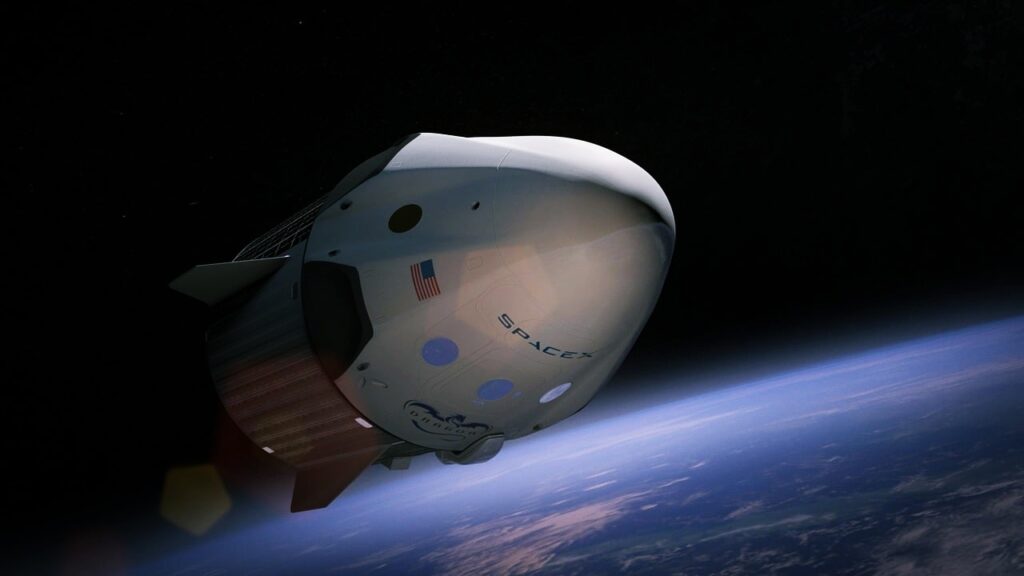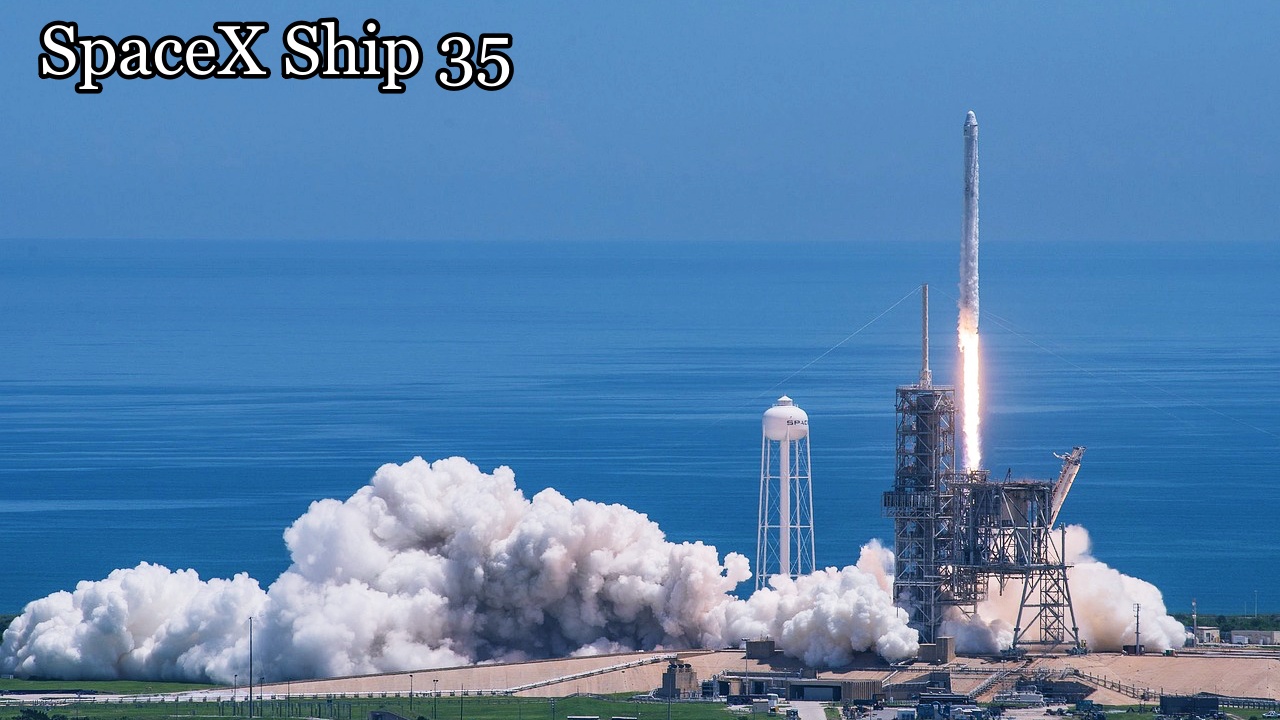2025 marks a pivotal moment in human space flight, with SpaceX standing on the verge of two historic achievements. After seven test flights pushing the boundaries of what’s possible, SpaceX is now preparing its Starship Program for what could be its most significant launch yet—Ship 35.
This launch aims not only to reach orbit but also to pioneer a revolutionary landing technique using the Mechazilla catch arms. The stakes couldn’t be higher, with Blue Origin’s unexpected success with New Glenn and China’s rapid advancement with methane-powered rockets intensifying the race to orbit. But SpaceX isn’t just aiming to join the competition; they are aiming for something far more ambitious.
On Space Frontier, we’ll take you behind the scenes of Ship 35’s preparation, explore the groundbreaking tech that could make catching a massive spacecraft possible, and analyze what these developments mean for the future of space exploration.
Ship 35: The Future of Space Travel
As the dawn breaks over Starbase Texas, casting long shadows across Ship 35, it stands gleaming in the early morning light. This isn’t just another prototype in SpaceX’s relentless march toward the stars—it’s the culmination of years of innovation, countless setbacks, and unwavering determination.
Key Modifications and Technology
In early January 2025, engineers began assembling Ship 35’s critical components. The complex dispenser system arrived first, designed to facilitate future satellite deployments. By January 27, the liquid oxygen section joined the assembly, and by the end of the month, the final pieces slid into position. Each milestone represents hundreds of hours of precision engineering and the combined expertise of some of the world’s finest minds in aerospace. These structural modifications make Ship 35 the most advanced Starship prototype to date, with the capacity to attempt something never before achieved in spaceflight history.
The Mechazilla Catch System: A Game-Changer
One of the most audacious innovations in the Ship 35 mission is the Mechazilla Catch System. Instead of landing on legs or splashing down in the ocean, SpaceX plans to catch Ship 35 using massive robotic arms mounted on Tower B. This represents an entirely new approach to spacecraft recovery.
The precision required for this technique is staggering. Imagine threading a needle while riding a motorcycle—now consider that the needle is hundreds of feet tall, and the thread weighs several tons, all while dealing with atmospheric re-entry. The Mechazilla catch will require unprecedented mechanical precision.
But why take such a risk? The answer lies in SpaceX’s ultimate goal: rapid reusability. Every hour spent fishing rockets out of the ocean or refurbishing landing legs is an hour wasted. The Mechazilla system promises to revolutionize the process, allowing for the catching, refueling, and relaunching of Starship with unprecedented speed.

A New Era of Space Exploration
SpaceX’s vision isn’t just about catching rockets. It’s about transforming space travel into something routine, something almost mundane in its reliability. With the development of Tower B, SpaceX is laying the groundwork for a dual tower strategy: one for booster landings, and one for ship recovery. This strategy could revolutionize launch cadence, enabling multiple flights per day rather than just one or two per month.
What’s at Stake for SpaceX
As Ship 35 moves closer to its historic flight, the pressure mounts. Before Ship 35 can attempt its catch, it must first reach orbit—and that’s where Flight 8 comes into play. Scheduled for late February 2025, this crucial mission will test several key systems, including satellite deployment and in-space engine relights. The Raptor engines used in the flight must perform flawlessly to ensure success.
There’s also intrigue around the booster choice for Ship 35’s flight. While Booster 16 was originally slated for the mission, its development timeline has raised questions, and SpaceX may opt for Booster 14 instead. This would be a demonstration of core SpaceX philosophy: reusing boosters to drive down costs and increase launch frequency.
The Implications of a Successful Ship 35 Mission
Success for SpaceX in this mission would represent a fundamental shift in how humanity accesses space. Full reusability, mechanical precision landings, and rapid turnaround times are not just improvements—they’re the foundation of a completely new spaceflight paradigm.
If Ship 35 succeeds in both reaching orbit and executing a mechanical arm landing, it will demonstrate capabilities far beyond what is currently available. SpaceX will prove that fully reusable systems are not only possible but practical. The payload capacity of Starship combined with rapid reusability could transform everything from satellite deployment to lunar exploration.
The Road Ahead: Reusable Spaceflight
The implications of a successful Ship 35 mission are profound. A reliable fully reusable space system could make space travel as routine as airline flights. Imagine space stations being assembled module by module in months, rather than decades, and lunar bases being supplied by regular cargo runs instead of occasional missions. The economics of space would change forever.
As the launch date of Ship 35 approaches, every system will be checked and rechecked. The teams at Starbase will work around the clock, ensuring that every component is ready for the challenge ahead.
Conclusion: SpaceX’s Vision for the Future
The success of Ship 35 could change the future of space exploration forever. With reliability, reusability, and speed, SpaceX is pushing the envelope to create a new standard in space access. While Blue Origin and China’s space program make impressive strides, SpaceX’s ambitious vision of catch-and-reuse technology could leap far beyond conventional approaches.
The next few months will be crucial for SpaceX and the future of spaceflight. Stay tuned for detailed coverage of every development as the space race accelerates.
FAQ
Ship 35 stands out due to its advanced structural modifications and the incorporation of the Mechazilla catch system, which will attempt to catch the spacecraft using massive robotic arms, rather than landing it traditionally. This innovative approach is a critical step toward full reusability in spaceflight.
The Mechazilla catch system uses massive robotic arms to catch the spacecraft as it descends, eliminating the need for ocean splashdowns or landing legs. This revolutionary system aims to enable rapid reusability of rockets, improving launch turnaround times and reducing costs.
SpaceX’s Starship program aims to create a fully reusable space system, which could drastically change how humanity accesses space. The goal is to achieve rapid turnaround, allowing for multiple flights per day, and transforming space travel into a routine, reliable operation.
Ship 35 represents a transformational leap in space exploration. Its ability to perform mechanical precision landings and reach orbit with rapid reusability would change the game for everything from satellite deployment to lunar exploration.
Tower B is an essential part of SpaceX’s dual tower strategy, designed for booster landings and ship recovery. Its Mechazilla robotic arms will catch Starship, revolutionizing the recovery process and allowing for faster launch cadences and more frequent missions.
Ship 35’s Flight 8 is scheduled for late February 2025. This mission will test critical systems like satellite deployment, in-space engine relights, and the performance of Raptor engines, which must work flawlessly for the success of the mission.
A successful Ship 35 mission would prove that full reusability in space is possible and practical, making space travel as routine as airline flights. It could revolutionize lunar missions, Mars exploration, and satellite deployment, and open the door to frequent and cost-effective access to space.
Read More:

